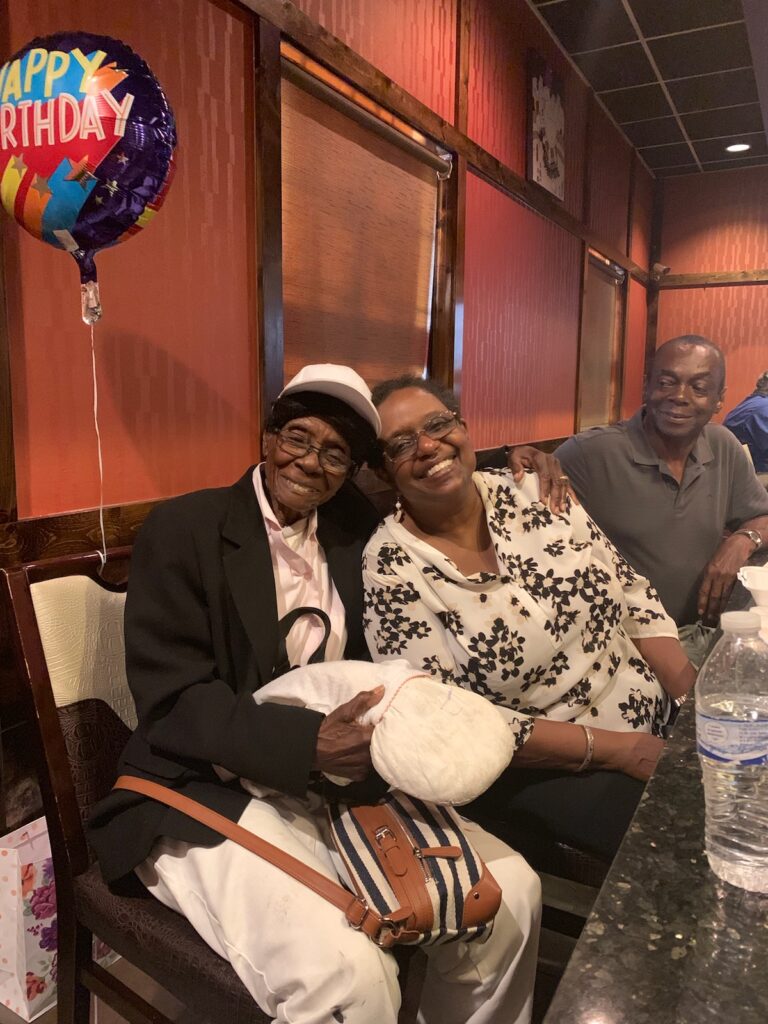
Ruby Williams was recognized for paintings and agriculture
The art world lost one of its prominent painters, Ruby C. Williams when she passed away on Aug. 8 in Plant City.
The Bealsville native was known for her bright-colored paintings of people, animals, and those that reflected her life as a farmer.
It wasn’t until the late 1980s when Williams began to discover her artistic side. She opened up her own produce stand on State Road 60 and painted signs to attract people to stop by.
One of her patrons was Rodney Hardee, a folk artist and art collector from Lakeland who purchased one of her signs, which was the first painting she ever sold. It was a ripe, red strawberry painted on a square plywood.
Also, Bud Lee, a Plant City-based photographer who was a freelancer for Esquire and other national magazines, was also intrigued by her work. Her stand was not only gaining recognition for its fruits and vegetable, but for her signs as well.
After meeting other artists and visiting museums in other regions of the south and in New York, she began not to limit herself to just signs, but to pictures.
Later in life, she would be known for her signature look: clothing that was designed with her painting.
“This is an accomplished, national artist,” said Bonnie Carr, a friend of Williams.
Carr was not an art enthusiast until she met Williams and saw the appeal of her paintings, several of which she has displayed in her home.
Williams was born and raised in Bealsville, where she learned to have an appreciation for farming and agriculture.
She and her family moved to New Jersey in the 1960s where she drove a bus, became a minister, and established a church. She was working as an evangelical minister at the Community Baptist Church of Love, along with its founder Frederick LaGarde Sr., who was a civil rights leader and a friend to Dr. Martin Luther King Jr, in New Jersey.
In 1967, Williams’ husband left her and their children. Through that dark period, she began to secretly create her own painting and continued to minister to at-risk youth.
“I just thought she was a courageous pioneer for good,” said her friend Lorna Taylor. “Whether it was in her early days in ministry or as she ministered through her art, she broke through multiple barriers, and she was undeterred by circumstances and also by skeptics.” She returned back to Bealsville with her children, where she began to focus on farming and establish her produce stand.
She would share her foods such as turnups, black-eyed peas, and okra.
Carr was one of those who received the products of her farming, and would often sit under a tree on Williams’ property and converse with her. When Carr had knee replacement surgery in 2019, Williams would check up on her almost every day.
“It was that kind of deep interaction that I had with her,” Carr said.
Her artwork gained popularity and in 2005 10 of her paintings were exhibited at the Smithsonian (Anacostia) Museum in Washington D.C. They were also featured in books and other exhibitions such as the Polk Museum of Art, Lakeland, and the American Visionary Art Museum.
In 2013, Hillsborough Community College’s Gallery 221 recognized Williams as a Florida folk art legend, with an exhibition put on by curator Katherine Gibson. The painter went on to receive more accolades, including the 2005 Department of State Division of Historical Resources Preservation Florida Folk Heritage Award, the 2009 Folk Art Society of America Award of Distinction, and the 2017 Tampa Bay Businesses for Culture and the Arts Lifetime Artistic Achievement Impact Award.
One of her well-known pieces is a piano-playing cow which stated, “I Give Better Buttermilk.”
Her work was also inspired by social issues in which she wanted to address.
“It Costs to Hate” was one of her messages that would be painted in big, bold letters on a bright-colored background.
“She was concerned that just in our environment, it was a heated time politically and…she wanted that message out there,” Carr said.
Her artwork is featured throughout the U.S. and globally, and continues to be recognized by art enthusiasts.
“I think that her life was a leading example and I think in her passing, she rises to the ranks of an icon,” Taylor said.
